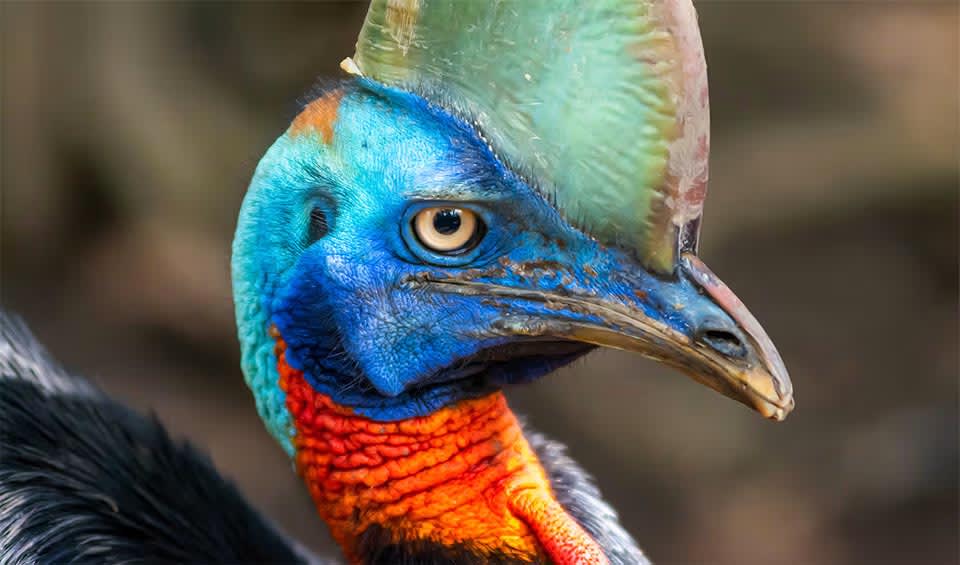The Southern Cassowary is an enigmatic creature, often regarded as a living link to the dinosaurs due to its prehistoric appearance. This bird, sporting a dramatic horn-like casque atop its head, is an imposing figure in the rainforests of northeastern Australia, Indonesia, and Papua New Guinea. It is the third heaviest bird on Earth, a title that reflects its robust and powerful physique.
While the bird’s exact function remains debatable, some scientists believe this bird’s distinctive casque plays a role in mate attraction and species recognition or even as a protective helmet when moving through dense vegetation. Below the casque hang two vibrant red wattles, which contrast starkly against the bird’s predominantly dark plumage and the dark blue shades of its head and neck.
Southern Cassowaries are mostly solitary, often considered the “gentle giants” of their habitat due to their generally shy and reclusive nature. However, when provoked or feeling threatened, they reveal a formidable side. They are known to defend themselves with their powerful legs and a dagger-like inner toe claw that can deliver a potentially lethal kick.
These birds are frugivorous, consuming a variety of forest fruits, which they process and subsequently disperse throughout their territory, playing an essential role in their ecosystems. The seeds that pass through the cassowary’s digestive system are more likely to germinate, making the Southern Cassowary a keystone species in its habitat.
Nesting habits of the Southern Cassowary are also noteworthy. They are ground nesters, with the male creating a simple platform of leaf litter where the female lays her eggs. The eggs are remarkable for their large size and greenish color, a hue imparted by the pigment biliverdin. This coloration provides excellent camouflage against the forest floor, crucial for the egg’s survival in a habitat teeming with potential predators.
Distribution
 Australia
Australia Official estimate
Official estimate
 Indonesia
Indonesia Official estimate
Official estimate
 Papua New Guinea
Papua New Guinea Official estimate
Official estimate
Anything we've missed?
Help us improve this page by suggesting edits. Glory never dies!
Suggest an editGet to know me
Terrestrial / Aquatic
Altricial / Precocial
Polygamous / Monogamous
Dimorphic (size) / Monomorphic
Active: Diurnal / Nocturnal
Social behavior: Solitary / Pack / Herd
Diet: Carnivore / Herbivore / Omnivore / Piscivorous / Insectivore
Migratory: Yes / No
Domesticated: Yes / No
Dangerous: Yes / No





